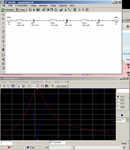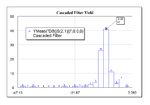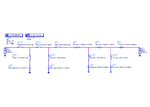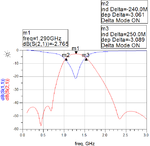neazoi
Advanced Member level 6
Hello,
I have designed a simple LC series filter using smd inductors for the 1296MHz.
The picture shows 3 such filters cascaded.
When two or more simple series LC filters are cascaded the filter response is better.
Since it is desirable to have equal inductors in the filter, do you think the filter I designed would be ok?
I have designed a simple LC series filter using smd inductors for the 1296MHz.
The picture shows 3 such filters cascaded.
When two or more simple series LC filters are cascaded the filter response is better.
Since it is desirable to have equal inductors in the filter, do you think the filter I designed would be ok?








